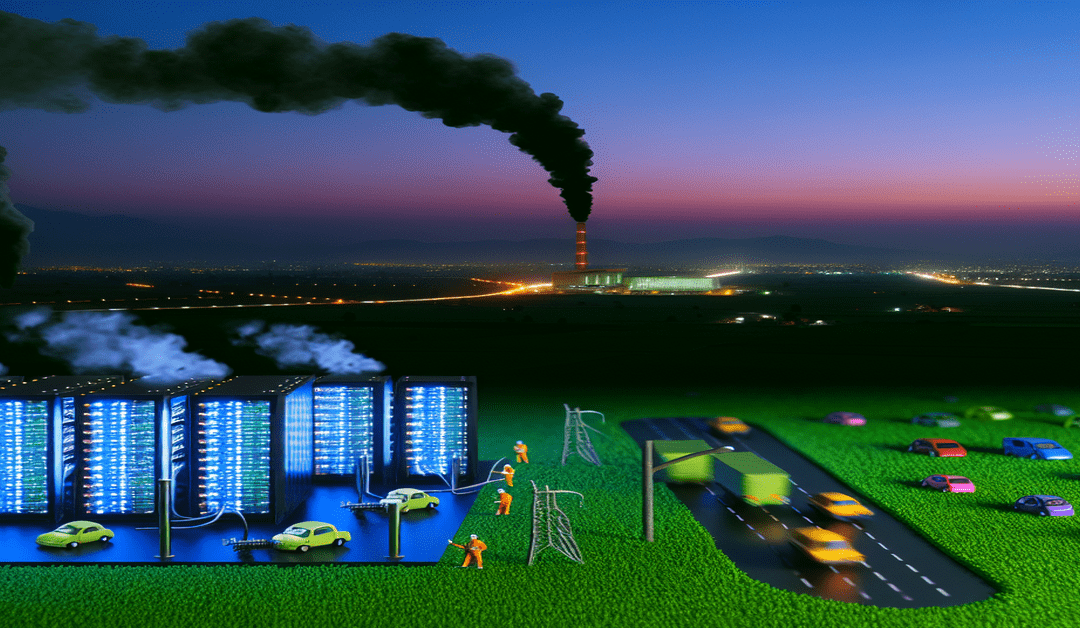The Hidden Cost of AI: Examining the Environmental Impact of Artificial Intelligence
In recent years, artificial intelligence (AI) has emerged as a transformative technology, revolutionizing industries and reshaping our daily lives. From self-driving cars to personalized recommendations, AI has brought forth a wave of innovation and efficiency. However, amidst the excitement surrounding AI’s potential, a crucial aspect often overlooked is its **environmental impact**.
The Energy-Intensive Nature of AI
At the core of AI’s environmental footprint lies its energy consumption. Training sophisticated machine learning models requires vast amounts of computational power, which translates to significant energy usage. Data centers and cloud computing services, the backbone of AI operations, are notorious for their high energy demands. As AI continues to advance and scale, the energy required to sustain its growth is expected to skyrocket.
The Carbon Footprint of AI
The energy powering AI systems is often generated by fossil fuels, resulting in substantial carbon emissions. A recent study by the University of Massachusetts Amherst revealed that training a single AI model can emit as much carbon dioxide as five cars over their lifetimes. This alarming statistic highlights the urgent need to address the **carbon footprint** of AI.
AI’s Emissions Surpassing California’s Cars
To put the environmental impact of AI into perspective, let’s consider a striking comparison. According to estimates, the carbon emissions from training AI models could surpass the total emissions from all cars in California within just five years. California, known for its progressive environmental policies and large vehicle fleet, serves as a poignant reference point for the **scale of AI’s potential pollution**.
The Role of Data Centers and Cloud Computing
Data centers and cloud computing services play a crucial role in the energy consumption associated with AI. These facilities house the servers and infrastructure necessary for AI operations, and their energy demands are substantial. As AI workloads increase, data centers must expand their capacity, leading to a corresponding rise in energy consumption and carbon emissions.
The Path to Sustainable AI
Addressing the environmental impact of AI requires a multi-faceted approach. **Sustainable practices** must be integrated into the development and deployment of AI technologies. This includes adopting renewable energy sources to power data centers, optimizing algorithms for energy efficiency, and promoting the use of energy-efficient hardware.
Collaborative Efforts Towards Eco-Friendly AI
Tackling the environmental challenges posed by AI demands collaboration among technology companies, researchers, and policymakers. Initiatives such as the AI for Climate coalition bring together stakeholders to explore sustainable AI solutions. By fostering open dialogue, sharing best practices, and investing in research and development, the industry can work towards mitigating the environmental impact of AI.
The Future of AI and Sustainability
As AI continues to shape our world, it is imperative that we prioritize sustainability in its development and deployment. By proactively addressing the environmental implications of AI, we can harness its transformative potential while minimizing its carbon footprint. This requires a collective commitment from the AI community to adopt eco-friendly practices, invest in renewable energy, and prioritize energy efficiency.
The path to sustainable AI is not without challenges, but it is a necessary journey. By raising awareness about the environmental impact of AI, encouraging responsible practices, and fostering innovation in sustainable technologies, we can create a future where AI and sustainability go hand in hand.
Let’s spark a conversation about the environmental implications of AI. Share your thoughts, insights, and ideas in the comments below. Together, we can shape a more sustainable future for AI and our planet. **#SustainableAI #EnvironmentalImpact #ResponsibleTech**
-> Original article and inspiration provided by Ryan Erik King
-> Connect with one of our AI Strategists today at Opahl Technologies

